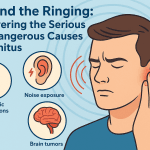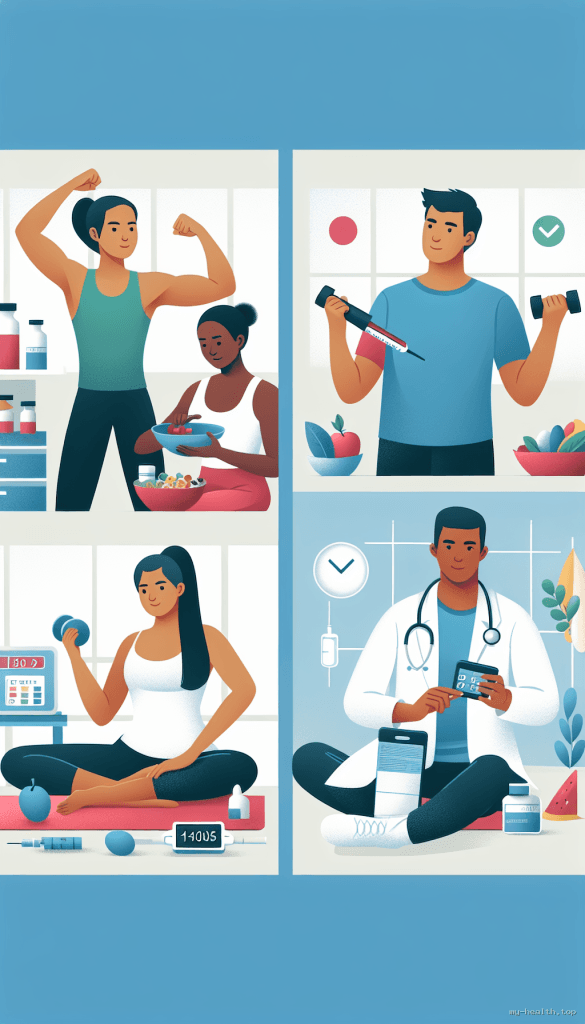This article is for informational purposes only and is not a substitute for professional medical advice. Always consult your healthcare provider for personalized guidance.
Understanding Diabetes and Its Symptoms
Diabetes is a chronic condition that affects how your body processes glucose, leading to elevated blood sugar levels. There are two main types: Type 1 diabetes, where the body doesn’t produce insulin, and Type 2 diabetes, where the body becomes resistant to insulin or doesn’t produce enough. Common symptoms include increased thirst, frequent urination, fatigue, and blurred vision. Understanding these symptoms is the first step in managing your condition effectively.
Effective Strategies for Managing Diabetes Symptoms
1. Monitor Your Blood Sugar Levels
Regularly checking your blood sugar levels is essential for effective diabetes management. It helps you understand how your body responds to different foods, activities, and medications. Aim to check your levels at various times throughout the day, especially before and after meals, to identify patterns. Consider keeping a log of your readings to discuss with your healthcare provider, as this can help tailor your management plan. Remember, consistent monitoring can help you recognize trends and make informed decisions about your diet and activity levels.
2. Follow a Balanced Diet
Your diet plays a crucial role in managing diabetes symptoms. Focus on whole foods, including:
- Whole grains: Brown rice, quinoa, and whole-wheat bread.
- Fruits and vegetables: Aim for a colorful variety to ensure you get essential nutrients.
- Lean proteins: Chicken, fish, legumes, and nuts can help maintain muscle mass.
- Healthy fats: Incorporate sources like avocados, olive oil, and fatty fish.
Consider working with a registered dietitian who specializes in diabetes to create a personalized meal plan that fits your lifestyle. They can help you understand the glycemic index of foods, which is a measure of how quickly foods raise blood sugar levels. For example, foods with a low glycemic index, like lentils and most fruits, are generally better choices. Additionally, be mindful of portion sizes and try to eat at regular intervals to maintain stable blood sugar levels.
3. Stay Active
Regular physical activity can significantly improve your insulin sensitivity and lower blood sugar levels. Aim for at least 150 minutes of moderate aerobic exercise each week, such as brisk walking, swimming, or cycling. Additionally, incorporate strength training exercises at least twice a week to build muscle and enhance metabolic health. Simple activities like gardening, dancing, or even walking the dog can be beneficial. Always consult your healthcare provider before starting a new exercise regimen, especially if you have other health conditions. It’s important to find activities you enjoy to stay motivated and consistent.
4. Manage Stress
Stress can lead to fluctuations in blood sugar levels due to the release of stress hormones like cortisol, which can cause insulin resistance. Incorporating stress management techniques can make a difference. Consider practices such as:
- Meditation: Spend a few minutes each day focusing on your breath or using guided meditation apps.
- Yoga: This combines physical activity with mindfulness, helping to lower stress levels.
- Deep breathing exercises: These can help calm your mind and body, making it easier to manage your condition.
Additionally, engaging in hobbies, spending time with loved ones, or even journaling can help reduce stress. Finding a support group can also provide a sense of community and understanding, which can be invaluable in managing diabetes.
5. Take Medications as Prescribed
If your healthcare provider has prescribed medication, taking it as directed is crucial. This may include insulin or oral medications that help control blood sugar levels. Discuss any concerns about side effects or effectiveness with your doctor to ensure you’re on the right track. It’s also important to understand how different medications work. For instance, metformin helps lower glucose production in the liver, while sulfonylureas stimulate insulin release from the pancreas. Always keep your healthcare provider informed about any changes in your symptoms or lifestyle that may affect your treatment plan.
6. Regular Check-Ups
Regular visits to your healthcare provider are vital for monitoring your diabetes management. These check-ups can help identify potential complications early, such as neuropathy or retinopathy, and allow for timely interventions. During these visits, your healthcare provider will likely assess your blood pressure, cholesterol levels, and overall metabolic health. Keeping track of your A1C levels, which provide an average blood sugar level over the past two to three months, can also be beneficial. Don’t hesitate to ask questions or discuss any concerns during these appointments; they are an essential part of your care.
Myth vs. Fact
| Myth | Fact |
|---|---|
| People with diabetes can’t eat sugar. | People with diabetes can enjoy sugar in moderation, but it’s essential to consider the overall balance of their diet. |
| Insulin is a cure for diabetes. | Insulin helps manage diabetes but is not a cure. Ongoing management is necessary. |
| Diabetes only affects older adults. | While Type 2 diabetes is more common in older adults, Type 1 diabetes can develop at any age. |
| Carbohydrates are bad for people with diabetes. | Carbohydrates are an essential part of a balanced diet; the key is to choose complex carbs and monitor portion sizes. |
Patient Vignette
Meet Sarah, a 45-year-old woman diagnosed with Type 2 diabetes last year. Initially overwhelmed, she began monitoring her blood sugar levels regularly and consulted a dietitian to revamp her eating habits. By incorporating more whole foods and exercising three times a week, she noticed significant improvements in her energy levels and overall well-being. Sarah also practices yoga to manage her stress, finding it beneficial for her mental health. After a few months, she was able to reduce her medication dosage under her doctor’s supervision, demonstrating that lifestyle changes can have a profound impact on diabetes management.
Frequently Asked Questions
What are the early signs of diabetes?
Early signs include increased thirst, frequent urination, extreme fatigue, and blurred vision. If you notice these symptoms, consult your healthcare provider.
How can I lower my blood sugar quickly?
To lower blood sugar quickly, engage in physical activity, drink water, or consume foods high in fiber. However, always consult your healthcare provider for personalized advice.
Is it possible to reverse Type 2 diabetes?
While there is no cure, many people can manage or even reverse Type 2 diabetes through lifestyle changes, including diet and exercise. Research shows that significant weight loss and dietary changes can lead to remission in some individuals (PubMed, 2023).
What is the best diet for managing diabetes?
A balanced diet rich in whole grains, lean proteins, healthy fats, and plenty of fruits and vegetables is recommended for managing diabetes. The Mediterranean diet has also shown benefits for blood sugar control.
How often should I check my blood sugar?
The frequency of blood sugar checks depends on your treatment plan. Generally, checking before and after meals is advisable, but consult your healthcare provider for specific recommendations.
What are some common diabetes complications to be aware of?
Common complications include cardiovascular disease, nerve damage (neuropathy), kidney damage (nephropathy), eye damage (retinopathy), and foot complications. Regular check-ups can help monitor for these issues.
Key Takeaways
- Monitor blood sugar levels regularly to understand your body's responses.
- Adopt a balanced diet rich in whole foods and low in refined sugars.
- Engage in regular physical activity to improve insulin sensitivity.
- Manage stress through mindfulness and relaxation techniques.
- Take medications as prescribed and attend regular check-ups with your healthcare provider.
References
- American Diabetes Association. (2022). Standards of Medical Care in Diabetes.
- Centers for Disease Control and Prevention (CDC). (2023). Diabetes Basics.
- World Health Organization (WHO). (2021). Diabetes.
- National Institute of Diabetes and Digestive and Kidney Diseases (NIDDK). (2022). Diabetes Overview.
- PubMed. (2023). The Role of Diet in Diabetes Management.
- UpToDate. (2023). Management of type 2 diabetes mellitus in adults.








Post a comment